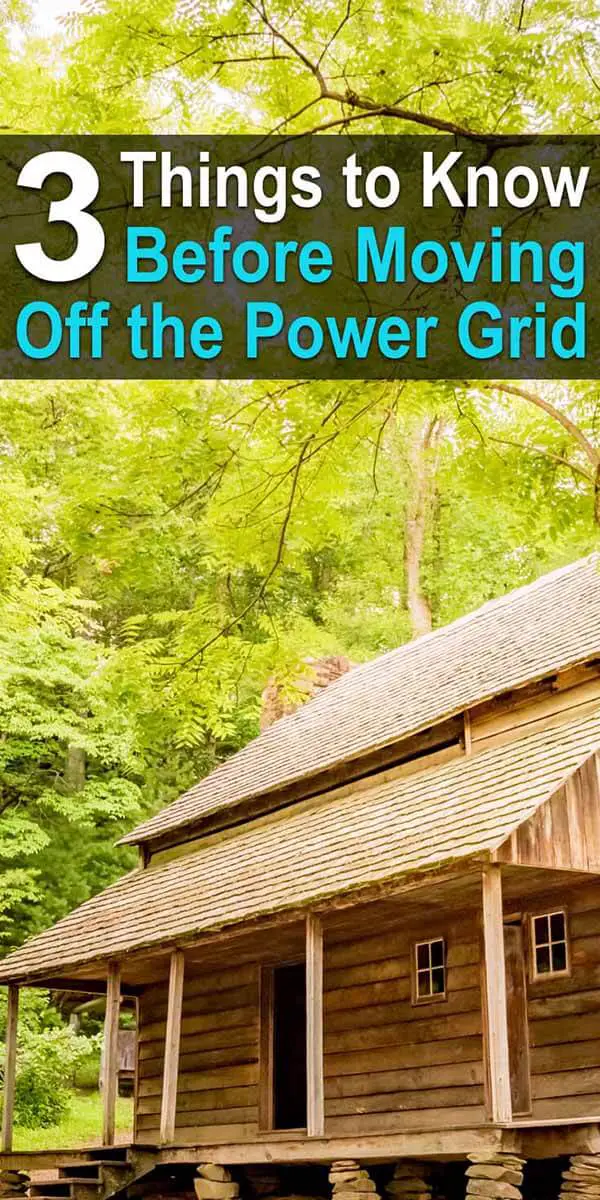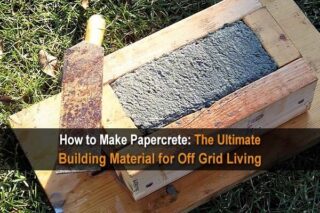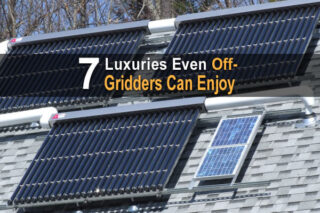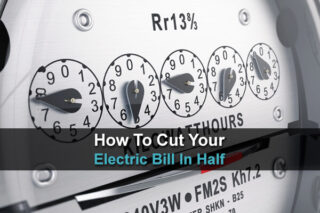Estimated reading time: 5 minutes
While you may dream of moving to an off-grid homestead, the reality may not be what you’d expect. When most people think of “off-grid living” they imagine a simpler lifestyle, where a rudimentary electrical system powers only basic conveniences.
You may be picturing hard rustic living, but in truth, off-grid living can be easy, and even include all of your favorite modern conveniences. With substantial advances in off-grid technology in the past few decades, off-grid could actually mean high tech living from the privacy of your own personal wilderness.
After 5 years living off-grid in Vermont, I wish I’d know three key things that would have made off-grid living easy from the start.
1. It Should Work
Before moving off-grid, I assumed it’d be hard. We would constantly be without power. Things wouldn’t work. We’d have to give up all our modern conveniences. Solar systems must be inherently unreliable, or everyone would live off-grid, right? Wrong.
In a properly designed solar system, everything should work seamlessly. Checks and balances control the charge rate of the batteries, and if you invest in a backup generator, it’s easy to wire it to automatically top off the batteries during extended cloudy periods. Other than the lack of electrical lines coming into your house, no one should be able to tell that you’re off-grid.
Not knowing this simple fact cost us a lot of time and money for nearly a full year after moving off-grid. A charge controller wasn’t wired correctly, and as the name suggests, a charge controller controls the rate of charge to your batteries, moderating it on sunny days to prevent potentially dangerous over-voltage. Without a functioning charge controller, you can't leave the house on sunny days, and you spend your time running around frantically trying to draw down power to manually regulate battery charge.
If you’re expecting the system to be unreliable, you don’t notice when things are broken. You assume it’s meant to be hard, and spend endless time and energy on workarounds. Know that it should be easy, and if it’s not, something is wrong.
2. Too Much Electricity is More Common Than Not Enough
Vermont’s not exactly known for its long days or short winters. Our growing season is a painfully short 90 to 100 days, and snow in early June isn’t that uncommon. People constantly ask, what do you do for power in winter? A better question is actually how do we make good use of excess electricity in the spring, summer, and fall.
Even in our northern climate, from mid-February to mid-November, a full 9 months, we have a glut of free electricity. Most days, batteries are fully charged by 10 am and all the energy hitting the panels after that in the peak of the afternoon is wasted unless you have a strategy to make good use of it.
This may mean having parallel systems, one set of “summer” appliances like an electric water heater for use in the summer, and reserving a wood boiler or propane system to heat water for use in the winter months.
Summer cooking, canning, and preserving can be done on an electric hot plate or an oversized countertop toaster oven to save on stovetop propane. Some off-grid families even invest in summer infrastructures like an electric tractor and electric car to save on gas and diesel during the 9 months where electricity is free and plentiful.
While you may have been thinking your high electricity consumption appliances were useless in your new lifestyle, feel free to pull out your grandma’s super inefficient 1000 plus watt antique waffle iron. Always wanted a whirlpool tub for long soaks after a day in the garden? No problem! Run those jets guilt free 9 months of the year.
3. Direct Current (DC) Appliances Can Get You Through Tough Times
While most of the year is a glut of free electricity, it’s still true that in the dead of winter our electricity budget is tight. From mid-November to Mid-February, conservation is key. The sun is low on the horizon and days are short. Cloudy days and blizzards are common.
This is a place where remembering a few lessons from high school physics can come in handy. There are two commonly used types of electricity available: alternating current (AC) and direct current (DC). The standard wall plug in an on-grid home supplies AC electric because it’s the form that transports well over long distances in power lines. Solar panels generate DC electricity to charge batteries, but before you can use it to power standard plug-in appliances, it has to be converted to AC electric.
Off-grid setups use an inverter to convert it to AC electric. This means you can run anything an on grid household can, but the conversion process is costly and wastes an absurd amount of power. Ideally, to conserve power, your inverter would be off anytime it’s not needed. Without an inverter running, all continuously running appliances (like your refrigerator) or commonly needed things (such as lights) need to run on DC electricity straight from your batteries.
With off-grid living increasing in popularity, DC appliances are not only available, they’re also surprisingly affordable. A number of suppliers make super efficient DC refrigerators and freezers that are designed to last a lifetime. Ours have been in use continuously for 25 years without maintenance and are still going strong. DC lighting systems are used on boats and RV’s as well as in off-grid setups, so they’re even easier to come by.
With super efficient DC appliances and lights, food can be kept cold and lights on for weeks without new charge to the batteries. Installing direct current appliances can mean the difference between just getting by and thriving in the winter months, and they’re an investment that’s well worth the cost in the long run.












We live off grid full time for close to 10 years now. We started with twenty-four, 90 watt panels, facing south, that we bought used for about $3.50 a watt in 2003. They are putting out about 1,500 watts now and I am replacing them with twelve, 300 watt panels that we paid $110.00 each for. They are Grade A, Tier 1 panels. Panels are so inexpensive now due to robotics.
The best thing we ever did was put up another array of twelve, 300 watt panels that face 30 degrees east of south to get the morning sun.
We are also putting up three, 300 watt panels facing 60 degrees east of south to catch the sun as soon as it comes up over the mountains. Also three, 300 watt panels facing 60 degrees west of south to catch the sun before it sets.
Some would say hat 9 KW of solar is excessive. I disagree. First, it is all about the batteries. They are very expensive and last longer when they are not cycled down too low. You can also equalize the batteries without using a generator when you have a large solar array.
Some days may have only a few hours of sunlight before the clouds come in. A big solar array really takes advantage of just a couple hours of direct sunlight and grabs every photon.
Secondly, I calculate my solar need to fully charge the batteries when it is overcast with no shadow in the winter. Charging is about 20% of a sunny day. When it is overcast with a slight shadow, charging is 30% to 40%.
Our battery bank consists of twelve, 2 volt Rolls batteries, wired in series for a 24 volt system, with two 4K sine wave inverters. Batteries are 2,450 amps. Our freezers in the power room are 24 volts dc directly off the battery bank.
I should have the eighteen, 300 watt panels up in the next month. Right now solar panels are cheaper than I could have ever guessed.
We live at 37 degrees Lat with over 300 sunny days a year.